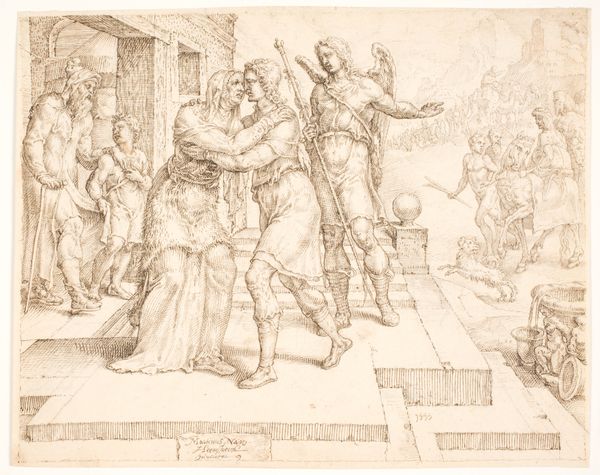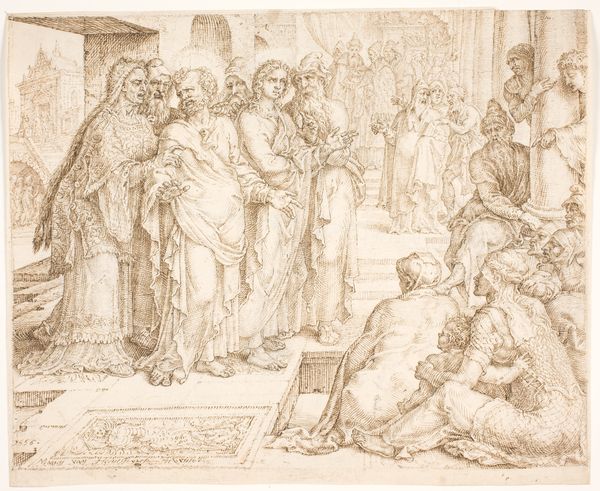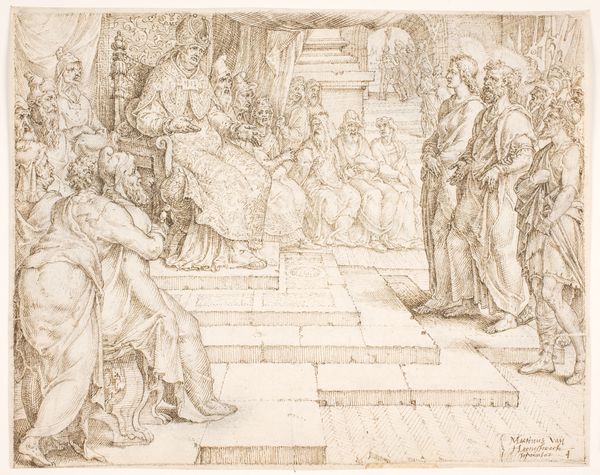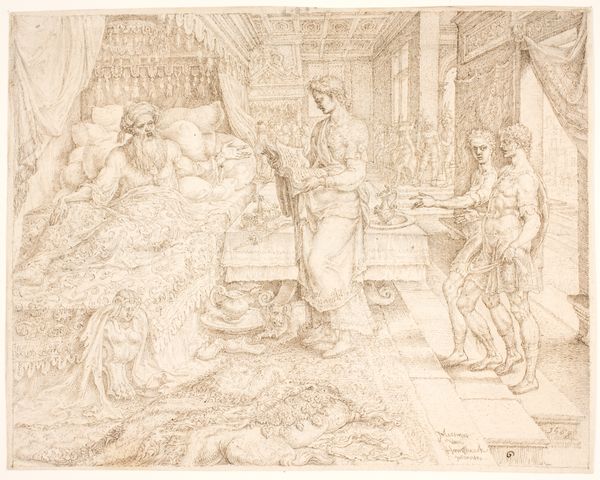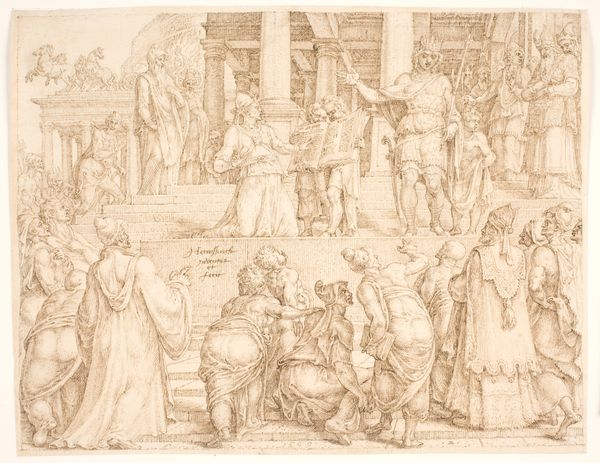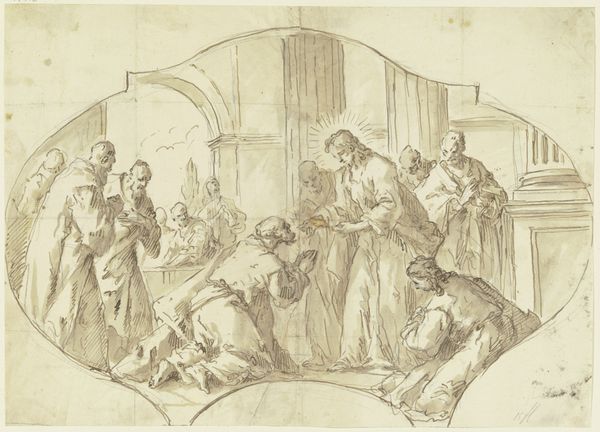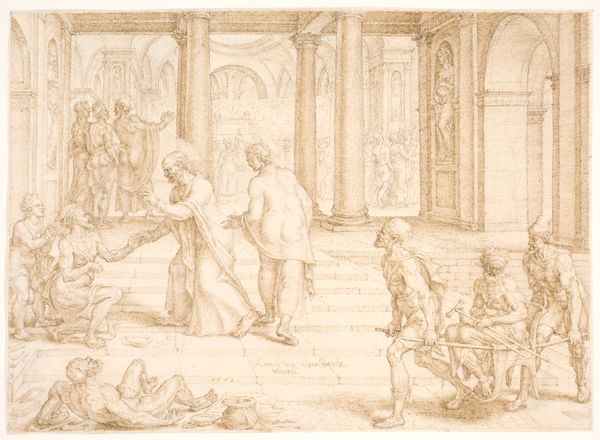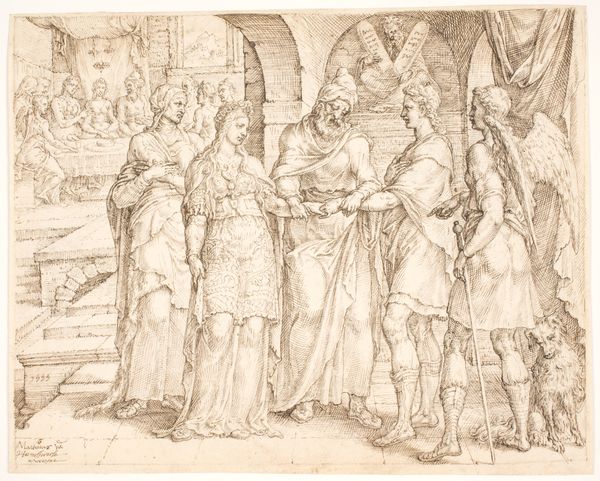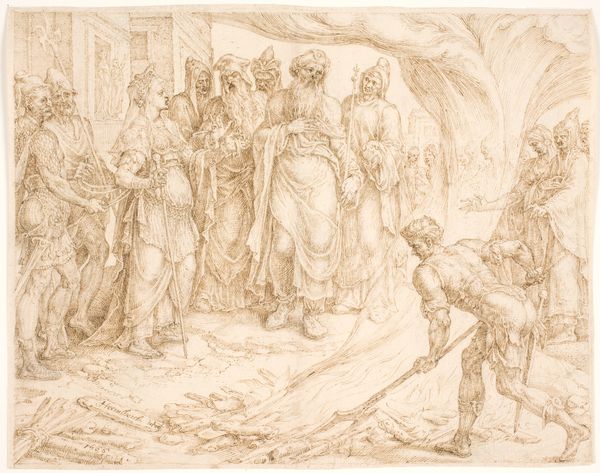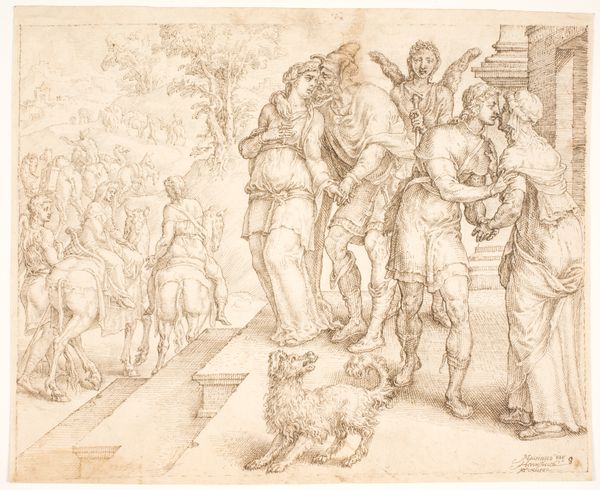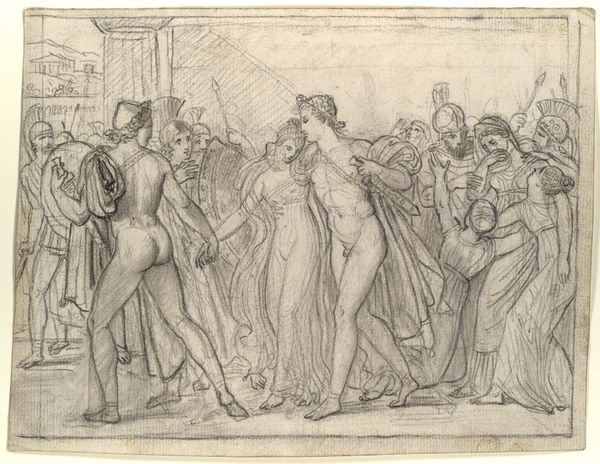
The lame Man accompanying St. Peter and St. John in the Temple 1556
0:00
0:00
drawing, print, engraving
#
drawing
# print
#
figuration
#
history-painting
#
northern-renaissance
#
engraving
Dimensions: 201 mm (height) x 252 mm (width) (bladmaal)
Editor: Here we have Maarten van Heemskerck’s "The Lame Man accompanying St. Peter and St. John in the Temple," a print from 1556. The hatching is really intricate. How do you see this piece, considering its time and materials? Curator: I see an object deeply embedded in the burgeoning print market of the 16th century. Heemskerck, rather than creating a unique painting, designed this image to be reproduced, consumed, and disseminated widely. Note the medium: engraving. This process, involving skilled labor and metal plates, enabled the mass production of imagery and narratives. Editor: So it was less about "high art" and more about getting a message out to the people? Curator: Exactly. Think about the materials and labor involved. The engraver, probably not Heemskerck himself, meticulously transferred the design onto the copper plate. Each impression pulled from the plate represents a unit of production and consumption. What does the subject matter itself – the healing of the lame man – suggest about the socio-economic conditions of the time, filtered through this particular means of production? Editor: It feels like the Church wanted to highlight their caring image… a form of propaganda, maybe? And the print form made it easier to spread? Curator: Precisely! The material existence of this print points us to these broader systems of production, exchange, and ideological dissemination that defined the Northern Renaissance. It moves the focus from artistic genius to cultural manufacture. Editor: I hadn't really thought about the print itself as a commodity. It’s fascinating to consider the materials and the printing process as integral to understanding the artwork’s purpose and impact. Curator: Indeed. By examining the print's materiality and its position within the social context of production and consumption, we gain a richer understanding of its meaning. We must always ask, what labor went into this?
Comments
No comments
Be the first to comment and join the conversation on the ultimate creative platform.
